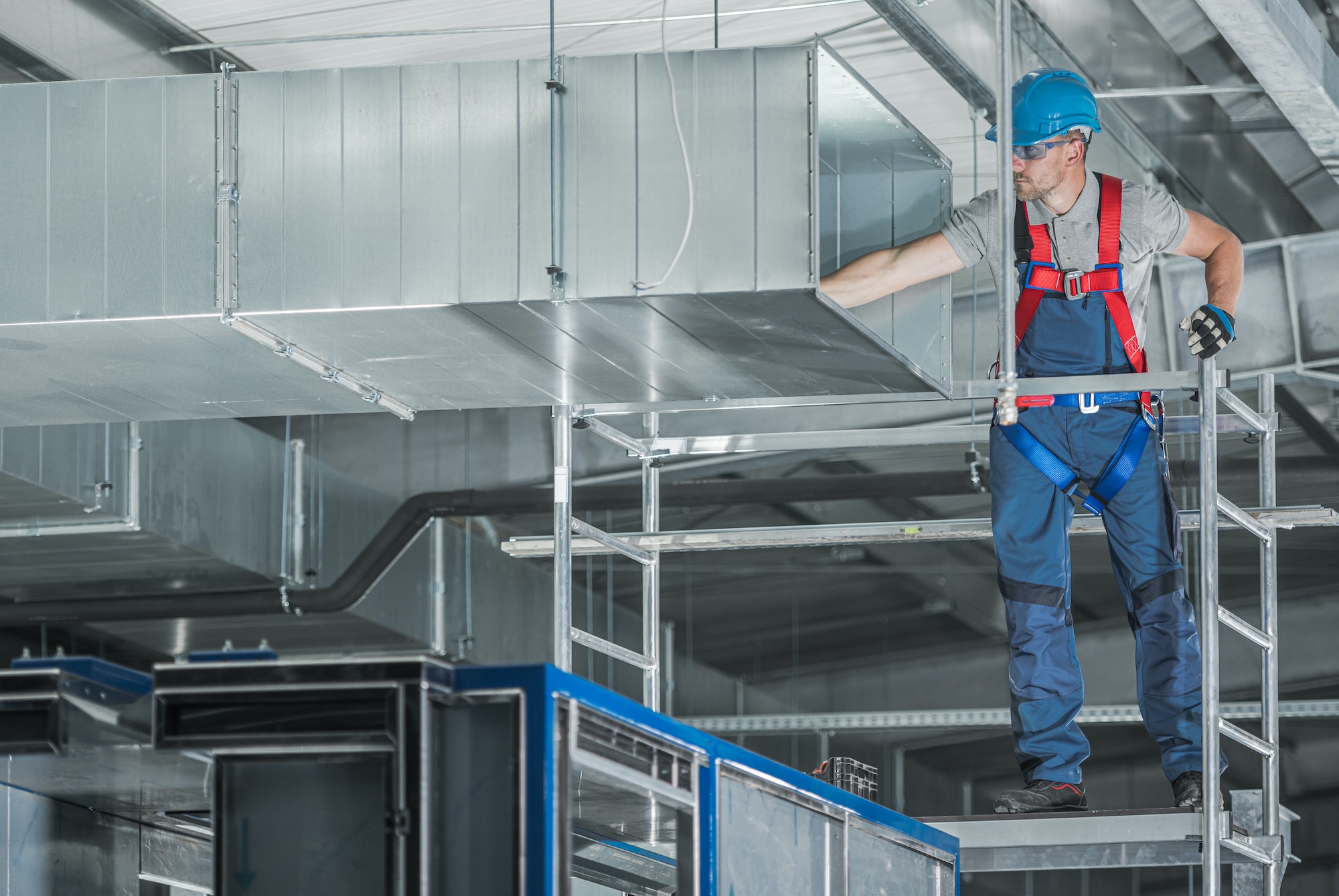Tired of Thermostat Tantrums? Let’s Upgrade Thermostat Installation with a Smart Solution for Total Control!
In today’s fast-paced world, where comfort and energy efficiency are paramount, dealing with thermostat tantrums can be a frustrating experience. Are you tired of battling with outdated thermostats that fail to deliver the desired temperature control and cost savings? It’s time to consider upgrading your thermostat installation to a smart solution that offers total control and convenience.
In this article, we’ll explore the challenges of traditional thermostats, shed light on the benefits of smart thermostat installation, and guide you through upgrading to a smart solution that puts you in the driver’s seat of your home’s climate control.
The Challenges of Traditional Thermostats
Traditional thermostats have long been a staple in households but have their fair share of limitations. Let’s take a closer look at the challenges associated with traditional thermostat systems:
1. Lack of Precision:
Traditional thermostats rely on outdated technology and may not provide precise temperature control. This can result in temperature fluctuations, leaving you either too hot or too cold.
2. Limited Programming Options:
Many conventional thermostats have basic programming capabilities, limiting your ability to create personalized schedules and adapt to changing occupancy patterns. This leads to energy waste and discomfort.
3. Manual Adjustments:
With traditional thermostats, you need to manually adjust the temperature settings whenever your preferences change or when you’re away from home. This can be inconvenient and inefficient.
4. Lack of Remote Access:
Traditional thermostats offer limited or no remote access, preventing you from adjusting the temperature settings when you’re away from home. You need to take advantage of the convenience of controlling your thermostat from anywhere.
The Benefits of Smart Thermostat Installation
Smart thermostat installation brings a host of benefits that revolutionize your home’s climate control and energy management. Let’s explore the advantages of upgrading to a smart solution:
1. Enhanced Temperature Control:
Smart thermostats utilize advanced sensors and algorithms to deliver precise temperature control, ensuring that your home consistently stays at your desired comfort level.
2. Energy Efficiency and Cost Savings:
Smart thermostats employ learning algorithms to analyze your heating and cooling patterns, enabling them to adjust the temperature settings for optimal energy efficiency automatically. As a result, energy use and utility costs are decreased.
3. Programmable and Adaptive Schedules:
With smart thermostats, you have the flexibility to create personalized schedules tailored to your lifestyle. They adapt to your occupancy patterns, automatically adjusting the temperature based on when you’re home or away. This does away with the requirement for ongoing manual modifications.
4. Remote Access and Control:
Smart thermostats offer remote access through mobile apps or web interfaces, allowing you to control your thermostat from anywhere. Whether you’re at work or on vacation, you can adjust the temperature settings to ensure a comfortable environment upon your return.
5. Smart Integrations and Voice Control:
Among other smart home gadgets, voice assistants and home automation systems are smoothly integrated with smart thermostats. For more automation, your thermostat can be controlled by voice commands, customized routines, or even sensors or occupancy detectors.
Upgrading to a Smart Thermostat
Now that you are aware of the advantages of installing a smart thermostat, let’s talk about how to upgrade to a smart solution for complete control:
1. Assess Your Compatibility:
Check the compatibility of your existing HVAC system with smart thermostats. Most modern systems are compatible, but verifying before making a purchase is essential. Consult the smart thermostat manufacturer’s compatibility guide or seek professional assistance if needed.
2. Choose the Right Smart Thermostat:
Research different smart thermostat models and consider their features, compatibility, and user reviews. Look for a thermostat that suits your specific needs and offers the desired functionality, such as remote access, energy-saving features, and smart integrations.
3. Purchase and Gather Necessary Tools:
Once you’ve selected the smart thermostat, make the purchase and gather the necessary tools for installation. Typically, you’ll need a screwdriver, wire strippers, and possibly a power drill, depending on the installation requirements.
4. Turn off the Power and Remove the Old Thermostat:
Before installing, turn off the power to your HVAC system from the circuit breaker. Remove the cover and detach the old thermostat from the wall, carefully noting the wiring connections.
5. Install the Smart Thermostat:
Follow the manufacturer’s instructions for installing the smart thermostat. Typically, this involves mounting the baseplate to the wall, connecting the wires to the corresponding terminals, and attaching the thermostat to the baseplate.
6. Connect to Wi-Fi and Set Up:
Once the physical installation is complete, power on your HVAC system and connect the smart thermostat to your home’s Wi-Fi network. Download the accompanying mobile app or access the web interface to complete the setup process, including configuring your preferences, schedules, and smart integrations.
7. Test and Fine-Tune:
After setup, test the functionality of your smart thermostat by adjusting the temperature settings remotely and monitoring the HVAC system’s response. Fine-tune the schedules and settings to align with your preferences and optimize energy efficiency.
FAQs about Thermostat Installation
1. What is the importance of professional thermostat installation?
Professional thermostat installation is essential to guarantee your heating and cooling system operates at its best and is as efficient as possible. Trained technicians have the expertise to wire and calibrate the thermostat correctly, ensuring accurate temperature readings and proper communication with your HVAC system. Improper installation can lead to temperature inconsistencies, energy wastage, and potential damage to your HVAC equipment.
2. Can I install a smart thermostat myself, or do I need professional assistance?
While some homeowners may have the technical skills to install a smart thermostat themselves, it is recommended to seek professional assistance. Smart thermostat installation may involve complex wiring configurations and compatibility checks with your HVAC system. Professional technicians have the knowledge and experience to handle the installation process smoothly, ensuring that the thermostat functions correctly and integrates seamlessly with your heating and cooling system.
3. What should I consider when choosing a thermostat for my home?
When choosing a thermostat for your home, consider the following factors:
- Compatibility: Ensure that the thermostat is compatible with your HVAC system. Different systems have varying requirements, such as voltage levels and wiring configurations.
- Features: Determine the features you need, such as programmable schedules, Wi-Fi connectivity, smart integrations, and energy-saving capabilities. Choose a thermostat that aligns with your specific requirements.
- User Interface: Think about how user-friendly and accessible the thermostat’s UI is. Look for intuitive controls and a clear display for convenient temperature adjustments.
- Energy Efficiency: Opt for a thermostat that offers energy-saving features, such as learning algorithms, adaptive schedules, and occupancy sensors, to maximize energy efficiency and cost savings.
4. Can I replace my old thermostat with a smart thermostat?
You can replace your old thermostat with a smart thermostat. However, it’s important to check compatibility before making the switch. Smart thermostat manufacturers typically provide compatibility guides or online tools to help you determine if your HVAC system is compatible. If you need more clarification, it’s best to consult a professional technician who can assess your system and recommend the most suitable smart thermostat for your home.
5. Are there any benefits to upgrading to a smart thermostat?
Upgrading to a smart thermostat offers several benefits, including:
- Enhanced Control: Smart thermostats provide precise temperature control and customizable schedules, allowing you to maintain optimal comfort levels throughout the day.
- Energy Efficiency: With features like learning algorithms and occupancy sensors, smart thermostats optimize energy usage, automatically adjusting temperatures when you’re away or asleep to conserve energy and reduce utility costs.
- Remote Access: Smart thermostats offer remote access through mobile apps or web interfaces, enabling you to control your thermostat from anywhere, anytime, ensuring a comfortable environment when you arrive home.
- Smart Integrations: Smart thermostats seamlessly integrate with other smart home devices, such as voice assistants and home automation systems, allowing you to create personalized routines and automate temperature adjustments for a more convenient and connected living experience.
- Energy Usage Insights: Many smart thermostats provide energy usage reports and insights, helping you monitor and understand your heating and cooling patterns and empowering you to make informed decisions for improved energy efficiency.
Remember, consulting with a professional HVAC technician or thermostat installer can provide valuable guidance and ensure a seamless home transition to a smart thermostat.
Conclusion
Upgrade your thermostat installation to a smart solution for total control and bid farewell to thermostat tantrums. Smart thermostats offer precise temperature control, energy efficiency, programmable schedules, remote access, and seamless integration with other smart home devices. Investing in a smart thermostat enhances comfort, reduces energy consumption, and allows you to control your home’s climate from anywhere.
When upgrading to a smart thermostat, assess compatibility, choose the right model, gather the necessary tools, and follow the installation instructions carefully. Connect to Wi-Fi, set up preferences, and fine-tune the settings to optimize performance.
Visit our website ContractorHomeQuotes.com to learn more.








